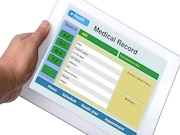Patients at risk for cardiovascular disease identified even with missing electronic health record data
FRIDAY, Jan. 4, 2019 (HealthDay News) — Population-level data can help medical practitioners use electronic health records to identify patients at risk for cardiovascular disease, according to a study recently published in the Journal of the American Medical Informatics Association.
Samuel Cykert, M.D., from the University of North Carolina at Chapel Hill, and colleagues created a statewide network of health care professionals in 219 small primary care practices. Researchers examined existing electronic health records for 345,440 patients. They used an estimation methodology including data from the 236,925 patients who had cholesterol numbers in their electronic health records to determine the risk for developing cardiovascular disease among the 108,515 patients lacking cholesterol scores.
The researchers found that using the formal imputation method based on other available indicators, such as smoking status, hypertension, weight, diabetes status, and gender, 43,205 patients with missing cholesterol values were identified with atherosclerotic cardiovascular disease risk scores ≥10 percent versus 40,565 with risk scores ≥10 percent identified using the “good value” methodology, which inserts conservative values for missing total cholesterol (170 mg/dl) and high-density lipoprotein cholesterol (50 mg/dl). The formal imputation method yielded a lower specificity and a higher false-positive rate than the conservative estimates used in the good value methodology.
“Whether doctors are part of a large health system or in a small rural practice, the fact that all these patients have digital data now means we can identify patients who are at high risk of developing a very serious condition without waiting six months for them to make an appointment,” Cykert said in a statement. “Doctors can engage with these patients immediately and re-engage with them as needed to decrease risk, which is so crucial when it comes to decreasing the number of heart attacks and strokes.”
Copyright © 2018 HealthDay. All rights reserved.








